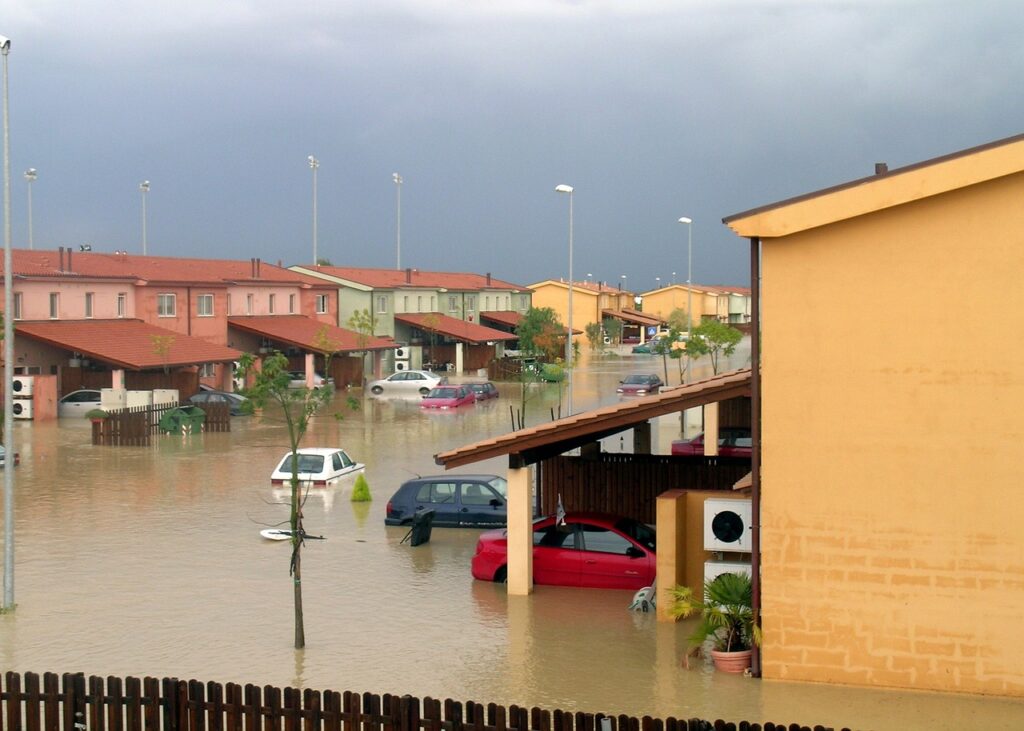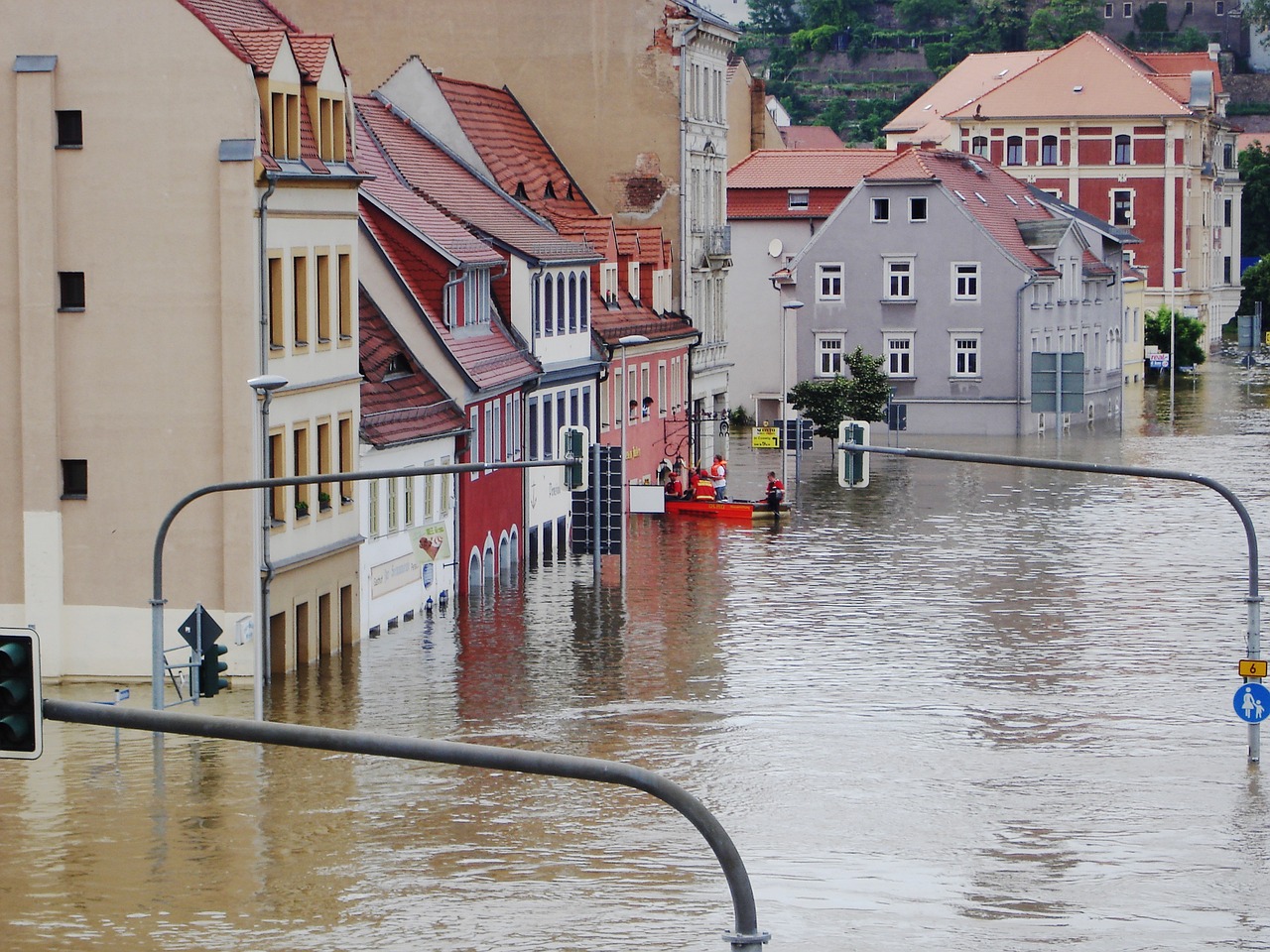In a cataclysmic turn of events, extensive flooding has besieged parts of Russia and Kazakhstan, wreaking havoc on communities along the banks of the Ural River. The deluge, triggered by snowmelt, has forced an exodus of more than 100,000 individuals, provoking widespread protests against the authorities in both nations. As Europe’s third-longest river swells beyond capacity, entire towns and cities are submerged, signaling a dire humanitarian crisis.
Originating from Russia’s Ural Mountains and traversing through Kazakhstan before reaching the Caspian Sea, the Ural River’s fury has unleashed unprecedented chaos this week. In Russia’s Orenburg region alone, nearly 13,000 residential structures succumbed to the inundation, compelling over 7,700 residents to flee their homes. The situation has reached critical levels, with water levels surpassing 33 feet in Orenburg city, eclipsing designated safety thresholds.
Despite the escalating crisis, governmental responses have come under intense scrutiny. Russian President Vladimir Putin, while overseeing operations remotely, has faced mounting criticism for his absence from the affected regions. Protesters, disillusioned by perceived governmental negligence, have clamored for assistance, with chants of “Shame!” reverberating through flooded streets. Yulia Navalnaya, widow of the late opposition leader Alexey Navalny, lambasted authorities for their apparent lack of preparedness and transparency.
The human toll of the floods is staggering, with over 100,000 individuals evacuated and countless homes engulfed by rising waters. In Kazakhstan, the situation mirrors the devastation witnessed in Russia, with over 96,000 evacuations reported. Efforts to mitigate the crisis have been marred by logistical challenges, exacerbating the plight of displaced communities.

The catastrophic floods have prompted an outpouring of international concern, with Pope Francis expressing solidarity with the victims and urging prayers for those affected. As both nations grapple with the aftermath, concerted efforts are underway to provide humanitarian aid and support to affected regions.
Beyond the immediate humanitarian crisis, the floods threaten to inflict lasting environmental and economic repercussions. Vital infrastructure, including dams and reservoirs, is strained to the brink, raising concerns of prolonged disruptions to essential services. Furthermore, agricultural lands lay inundated, posing a significant threat to food security and livelihoods.
The flooding poses significant health and safety risks to affected populations. Contaminated floodwaters may harbor hazardous substances, leading to waterborne diseases and exacerbating public health challenges. Moreover, overcrowded evacuation centers heighten the risk of disease transmission, necessitating urgent measures to safeguard the well-being of displaced individuals.
The mass displacement resulting from the floods underscores the urgent need for humanitarian assistance. Displaced individuals, many of whom have lost their homes and possessions, require access to shelter, clean water, food, and medical care. Efforts to address the humanitarian needs of vulnerable populations, including women, children, and the elderly, must be prioritized to prevent further suffering.
The widespread inundation has inflicted severe damage to critical infrastructure, including roads, bridges, and utilities. Disruptions to transportation networks hinder rescue and relief efforts, while damage to energy infrastructure exacerbates power outages and compromises essential services. The economic toll of the floods is staggering, with agricultural losses, property damage, and business closures exacerbating existing hardships.

The catastrophic floods underscore the growing threat of climate change and the need for enhanced resilience measures. Extreme weather events, fueled by climate variability, are likely to become more frequent and severe, necessitating proactive adaptation strategies. Investments in flood mitigation infrastructure, early warning systems, and community preparedness are crucial to building resilience and minimizing the impact of future disasters.
As the floodwaters recede, attention turns to long-term recovery and reconstruction efforts. The rebuilding process will require coordinated action from government agencies, humanitarian organizations, and the private sector. Investments in resilient infrastructure, livelihood restoration programs, and psychosocial support services are essential to facilitate the recovery of affected communities and foster sustainable development.
The transboundary nature of the floods underscores the importance of international collaboration and solidarity in responding to humanitarian crises. Regional cooperation mechanisms, such as the sharing of hydrological data and mutual assistance agreements, are vital for effective disaster preparedness and response. International support, including financial aid, technical assistance, and capacity-building initiatives, plays a crucial role in bolstering the resilience of flood-affected nations and promoting collective action to address shared challenges.
The inundation of Russia and Kazakhstan by the Ural River signifies a harrowing chapter in the region’s history, with the scale of destruction rivaling that of past calamities. As communities reel from the devastation, calls for robust governmental intervention and international solidarity echo across the flood-ravaged landscape. Amidst the turmoil, resilience and solidarity emerge as beacons of hope in the face of unparalleled adversity.
Related:Taiwan Struck by Strongest Earthquake in 25 Years, kills at least 9
